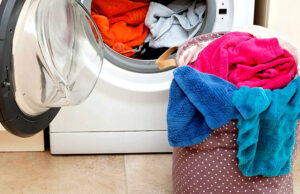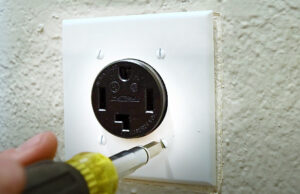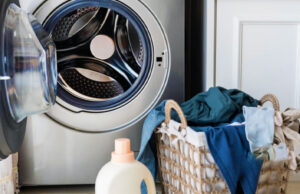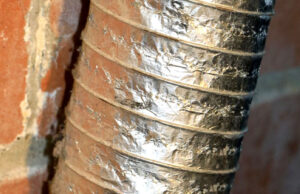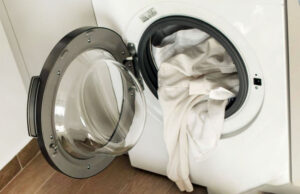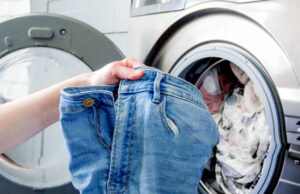Some of our posts contain affiliate links. If you buy through our links, I may earn a small commission at no extra cost to you.
Kenmore Front Load Washer Not Draining: Fix It Now with Expert Tips!
Is your Kenmore front load washer giving you trouble by not draining? If so, don’t worry, we’ve got you covered. A washer that fails to drain can be quite frustrating, preventing you from completing your laundry. We will guide you through the possible causes and solutions to get your Kenmore washer back to optimal functionality.
Whether it’s a clogged hose or a malfunctioning pump, we will help you troubleshoot the issue step by step. So, let’s dive into the possible reasons behind your washer not draining and explore the solutions to resolve this problem swiftly and effectively.
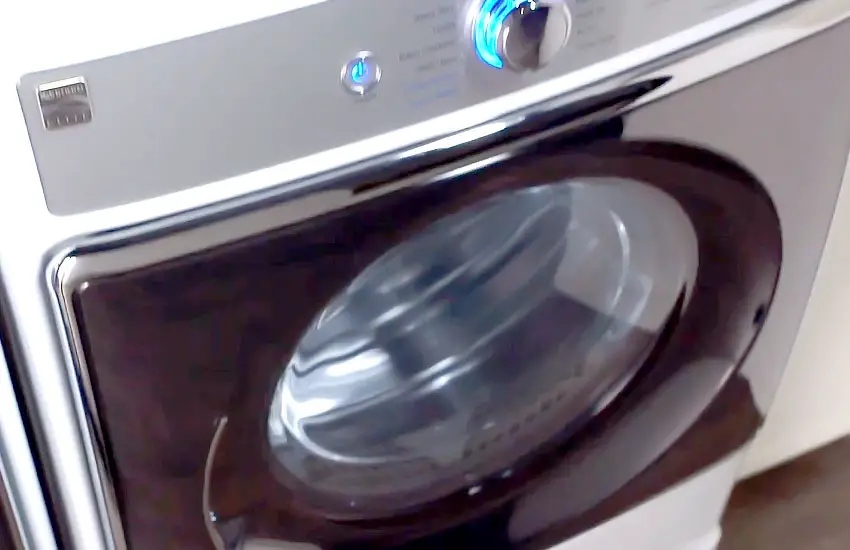
Common Reasons for Kenmore Front Load Washer Not Draining
Understanding the common reasons behind this issue can help you troubleshoot and resolve the problem quickly. Here are three common reasons why your Kenmore front load washer may not be draining properly:
Clogged Drain Hose
A clogged drain hose is one of the primary causes of a Kenmore front load washer not draining. Over time, debris such as lint, coins, or small items of clothing can accumulate in the drain hose, obstructing the flow of water. To check for a clogged drain hose, follow these steps:
- Turn off and unplug the washing machine to ensure safety.
- Locate the drain hose at the back of the washer.
- Inspect the drain hose for any blockages or kinks.
- If you find any clogs, gently remove them using a long, flexible object like a wire hanger or a plumbing snake.
- Once cleared, test the washer by running a short cycle to see if it drains properly.
Faulty Drain Pump
If the drain hose is clear, the next possible culprit could be a faulty drain pump. The drain pump is responsible for removing the water from the washer during the drain cycle. If it becomes damaged or malfunctioning, it can prevent water from draining properly. Follow these steps to troubleshoot a faulty drain pump:
- Turn off and unplug the washing machine.
- Locate the drain pump, usually located at the bottom of the washer.
- Inspect the drain pump for any visible signs of damage, such as cracks or leaks.
- If there are no apparent signs of damage, listen for any unusual noises coming from the drain pump during the drain cycle.
- If you suspect a faulty drain pump, it is recommended to contact a professional technician to replace it.
Drain Filter Blocked
Another common reason for a Kenmore front load washer not draining is a blocked drain filter. The drain filter is designed to catch debris and prevent it from clogging the drain pump. However, if the drain filter becomes blocked, it can hinder the draining process. Follow these steps to clean the drain filter:
- Turn off and unplug the washer.
- Locate the drain filter, usually located at the front or bottom of the washer.
- Place a towel or bucket underneath the filter to catch any excess water.
- Slowly unscrew the drain filter cap to release any trapped water and debris.
- Clean the filter using mild soap and warm water, removing any build-up.
- Once cleaned, screw the drain filter cap back on tightly.
- Plug in the washer and test it by running a short cycle to check if it drains properly.
Troubleshooting Steps to Fix a Kenmore Front Load Washer Not Draining
If your Kenmore front load washer is not draining, follow these troubleshooting steps to fix the issue. Check the drain hose, clean the filter, and inspect the pump for any blockages.
Check the Drain Hose
If you notice that your Kenmore front load washer is not draining, one of the first things you should check is the drain hose. A clogged or improperly installed drain hose can prevent water from flowing out of the machine, causing it not to drain properly.
Here are the simple steps you can follow to check the drain hose:
- First, locate the drain hose at the back of the washer.
- Ensure that the hose is not twisted or kinked.
- If there are any clogs, gently remove them using a long, flexible brush or a plumber’s snake.
- Inspect the connections between the drain hose and the washer as well as the drainage system. Make sure they are secure and tight.
- If you find any damage or leaks in the drain hose, it may need to be replaced.
Inspect the Drain Pump
The drain pump is responsible for pushing the water out of your Kenmore front load washer. If it is not working properly, water may accumulate and cause the washer not to drain. In this case, you will need to inspect the drain pump for any issues.
Follow these troubleshooting steps to inspect the drain pump:
- Ensure that the washer is unplugged and the water supply is turned off.
- Locate the drain pump, typically located at the bottom front or back of the washer.
- Check for any obstructions, such as lint or foreign objects, that may be blocking the pump.
- If necessary, use a small brush or toothbrush to clean the pump and remove any debris.
- Ensure that the pump impeller can move freely. If it is stuck or damaged, the pump may need to be replaced.
Clean the Drain Filter
The drain filter plays a crucial role in preventing lint, debris, and other particles from clogging the drain pump. Over time, it can become clogged itself, leading to drainage issues in your Kenmore front load washer. Cleaning the drain filter can often solve the problem.
Here’s how you can clean the drain filter:
- Locate the drain filter, usually located behind a small access panel at the bottom front of the washer.
- Place a towel or shallow container beneath the filter to catch any water that may spill out.
- Using a wrench or pliers, carefully unscrew the filter cap. Be cautious as water may gush out.
- Inspect the filter for clogs and remove any debris by rinsing it under running water.
- Once clean, reattach the filter cap and ensure it is tightened securely.
By following these troubleshooting steps, you can resolve the issue of a Kenmore front load washer not draining. If the problem persists, it’s advisable to contact a professional technician for further assistance.
Tools You May Need for Fixing the Drainage Problem
When your Kenmore front load washer is not draining properly, it’s important to have the right tools on hand to fix the issue. Here are three essential tools that can help you tackle the drainage problem quickly and efficiently:
Screwdriver
A screwdriver is a must-have tool for fixing a Kenmore front load washer’s drainage problem. With a screwdriver, you can easily remove the screws that hold the washer’s back panel in place. This allows you to access the drain pump and check for any clogs or obstructions. A flathead or Phillips screwdriver will work depending on the type of screws used.
Pliers
Pliers are another essential tool for repairing a Kenmore front load washer’s drainage problem. They come in handy when you need to remove clamps and hoses that connect to the drain pump. Pliers provide a firm grip, allowing you to detach and reattach components with ease. Slip-joint or adjustable pliers are recommended for this task.
Bucket
A bucket is a practical tool to have nearby when dealing with a drainage problem in your Kenmore front load washer. It allows you to catch any excess water that may spill out during the repair process. This prevents water damage to your floors and helps keep the area clean and tidy. Ensure the bucket is large enough to hold a significant amount of water.
By having these three essential tools on hand, you’ll be well-prepared to fix the drainage problem in your Kenmore front load washer. Remember to always refer to the user manual or seek professional assistance if needed. Now, let’s dive into the specific steps required to troubleshoot and resolve the drainage issue.
Steps to Clean a Clogged Drain Hose
If your Kenmore front load washer is not draining properly, a common culprit could be a clogged drain hose. Over time, dirt, lint, and debris can accumulate, blocking the flow of water and preventing your washer from draining effectively. To resolve this issue, follow these simple steps to clean the clogged drain hose.
Unplug the Washer and Remove the Hose
- Start by turning off your Kenmore front load washer and unplugging it from the power source to ensure your safety.
- Next, locate the drain hose at the back of the washer. It is usually attached to a drain pump or a standpipe.
- Carefully detach the hose from the drain pump or standpipe. You may need to use pliers to loosen any clamps or screws holding it in place.
Inspect and Remove the Clog
- Once the drain hose is detached, inspect it for any visible clogs or blockages. Look for lint, debris, or any other obstructions that may be causing the problem.
- If you can see the clog, use a pair of tweezers or needle-nose pliers to gently remove it. Be cautious not to damage the hose while doing this.
- If the clog is not visible, insert a plumbing snake or a wire hanger into the hose. Carefully maneuver it to break up the blockage and pull it out.
Reattach the Hose and Test
- After removing the clog, reattach the drain hose to the drain pump or standpipe. Ensure it is securely fastened to prevent any leaks.
- Before plugging the washer back in, double-check that no other parts of the hose or washer are damaged.
- Once everything is in place, plug the washer back in and run a test cycle to ensure the drain hose is now functioning properly. Check for any leaks or abnormal noises during the cycle.
Congratulations! You have successfully cleaned a clogged drain hose in your Kenmore front load washer. By maintaining a clean drain hose, you can prolong the lifespan of your washer and prevent future draining issues.
How to Replace a Faulty Drain Pump in a Kenmore Front Load Washer
If you own a Kenmore front load washer and are facing issues with it not draining properly, it could be due to a faulty drain pump. The drain pump plays a crucial role in draining the water from the washer during the cycle. If it becomes faulty, the water may not drain, resulting in standing water in the drum. In this guide, we will walk you through the steps to replace a faulty drain pump in your Kenmore front load washer.
Prepare the Washer for Repair
Before you begin replacing the drain pump, it is important to ensure that the washer is prepared for repair. Follow these steps to prepare your Kenmore front load washer:
- Unplug the washer from the power source to avoid any electrical mishaps.
- Turn off the water supply and disconnect the hoses from the washer.
- Remove any items or clothes from the washer drum.
Remove the Old Drain Pump
To replace the faulty drain pump, you will first need to remove the old one. Follow these steps to remove the old drain pump from your Kenmore front load washer:
- Locate the drain pump, which is typically located at the bottom of the washer.
- Using a screwdriver or a wrench, remove any screws or bolts that are securing the pump in place.
- Disconnect the electrical connections and hoses connected to the drain pump. Take note of their positions for future reference.
- Gently pull out the drain pump from its housing, being careful not to damage any surrounding components.
Install the New Drain Pump
Now that you have successfully removed the old drain pump, it’s time to install the new one. Follow these steps to install the new drain pump in your Kenmore front load washer:
- Take the new drain pump and carefully place it into the housing, ensuring it fits securely.
- Reconnect the electrical connections and hoses to the new drain pump, following the position you noted earlier.
- Secure the drain pump in place by tightening the screws or bolts using the appropriate tool.
- Double-check that all connections are tightly secured and properly aligned.
By following these simple steps, you can easily replace a faulty drain pump in your Kenmore front load washer. Remember to always refer to the manufacturer’s instructions for specific guidance and safety precautions. With a new drain pump in place, your washer will be back to efficiently draining water during each cycle.
Final Words
Troubleshooting a Kenmore front load washer that is not draining can be a frustrating experience. By following the steps outlined in this blog post, you can diagnose and fix the issue without having to call in a professional. Remember to check the drain hose, filter, and pump for any blockages, as these are the most common culprits.
With a little bit of patience and persistence, you’ll have your washer back up and running in no time.


